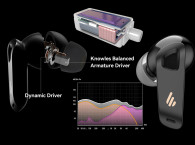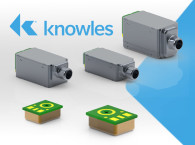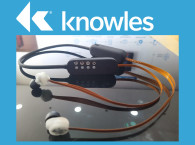Knowles Corporation showcased new advanced audio systems for mobile, wearable, hearable, and Internet of Things devices (IoT) at the Mobile World Congress 2016 in Barcelona. The company confirmed that it has shipped more than 8 billion MEMS microphones globally and reaffirmed the decision to sell its speaker and receiver product line segment of the company.
UPDATE. An earlier version of this story included the statement that Knowles' speaker and receiver product line segment included balanced armature drivers. We received a clarification from the company, explaining that Knowles intends “to sell only the speaker and receiver product line in our Mobile Consumer Electronics segment. This does not include balanced armature which falls under our Specialty Components segment.”
The following text has been corrected and updated accordingly.

Knowles Corporation celebrates a new industry milestone with the successful shipment of more than eight billion SiSonic microphones, globally. Knowles is a pioneer in the MEMS microphone industry, and is leading the industry to intelligent audio solutions that merge high-performance microphones with best-in-class audio software and signal processing.
“As consumer applications continue to evolve, we are seeing increased adoption of higher performing audio solutions for new use cases that are enabled by our microphones,” says Greg Doll, vice president of product management, Mobile Consumer Electronics, Performance Audio. “Our recent achievements signify Knowles’ ongoing advancement of MEMS microphone technology and our commitment to remain the turnkey enabler of market-leading products and scale to serve our customers’ needs.”
Voice is quickly becoming the preferred user-interface as new IoT applications emerge, and is redefining how consumers interact with technology. As a result, more intelligent audio solutions will be needed to enable a seamless experience across platforms for consumers.
“Building intelligent audio solutions around our high-performance microphones is a critical initiative for Knowles, and has significant implications for the mobile consumer industry,” says Thibault Kassir, vice president of product management, Mobile Consumer Electronics, Intelligent Audio. “As the developer of the world’s first smart mic, our intelligent products enable manufacturers to offer consumers the best voice quality and voice wake experiences.”
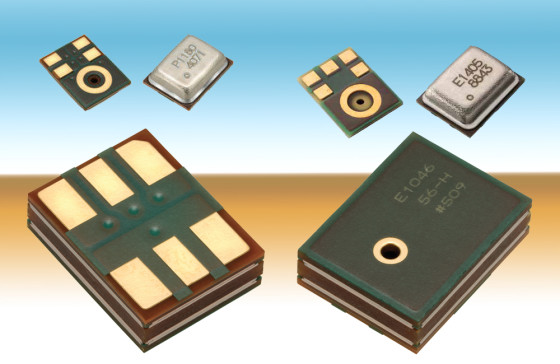
The new industry record comes at a time when Knowles Corporation announced its results for the fourth quarter and year ended December 31, 2015, also announcing the decision to sell its speaker and receiver product line segment of the company.
“We are pleased to report that Q4 revenue came in at the high-end of our original expectations,” said Jeffrey Niew, president and CEO of Knowles. “In our mobile consumer electronics segment, sales increased sequentially driven by strong demand from our largest customer early in the quarter, and improving trends with Chinese OEMs. Revenue from our specialty components segment was up 4 percent quarter over quarter driven by robust sales into the hearing health market.
“Today, we are also announcing our intent to sell the speaker and receiver product line in our mobile consumer electronics segment,” stated Niew. “While we’ve made operational improvements to this product line over the past several years, we do not believe this electro-mechanical business can leverage our long-term investment in semiconductor and software design capabilities. By exiting this product line, we anticipate meaningful improvements to our overall gross and operating margins while reducing capex intensity and improving free cash flow.”
“As we enter 2016, we plan to focus on businesses where we believe we have strong competitive advantage to sustain long-term revenue growth. We expect our leading position in microphones, intelligent audio and hearing health, combined with stable sales of precision devices will drive top-line growth and strong operating margins in the future.”
New MEMS microphones
In response to the growth of smaller, more efficient devices, Knowles recently developed the most advanced Inter-IC Sound, or I²S, interface MEMS microphone for wearables, smartphones, remote controllers, automotive, and smart appliances. Using this I²S interface, the bottom port digital MEMS microphone allows manufacturers to connect directly to an application processors or microcontrollers. The result is a more efficient architecture due to decreased complexity, increased battery performance, and a lower cost bill of material.
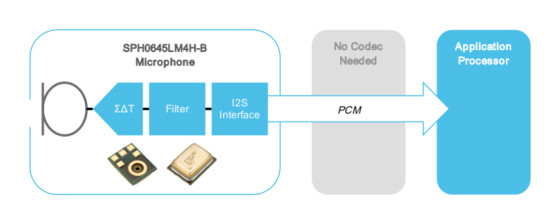
The new Knowles’ solution is 25 percent smaller and demands 50 percent lower current consumption than competitive products.The new technology easily integrates with existing mobile device architecture and simplifies system integration through a direct connection to signal processors (no audio codec necessary).
Other recent product introductions from Knowles includes the world’s first digital microphone supporting ultrasonic bandwidth. This new product allows microphones to assist smartphones and consumer electronics with touch-less gesture recognition, phone-to-phone data transmission, pen input compatibility for handsets and tablets, and 3D positioning input.
The new MEMS microphone can receive ultrasonic sound waves above the audible range of humans, up to 80 kHz, and use those waves to triangulate an object’s location and movement. Beyond the ultrasonic mode, the microphone offers four performance modes, including a low power voice activation mode, which is ideal for mobile consumer electronics. This advancement also has the potential to reduce the cost of manufacturing a device by eliminating the need for a micro infrared sensor, simplifying the device exterior, and integrating more capabilities into an existing component.
knowles.com




